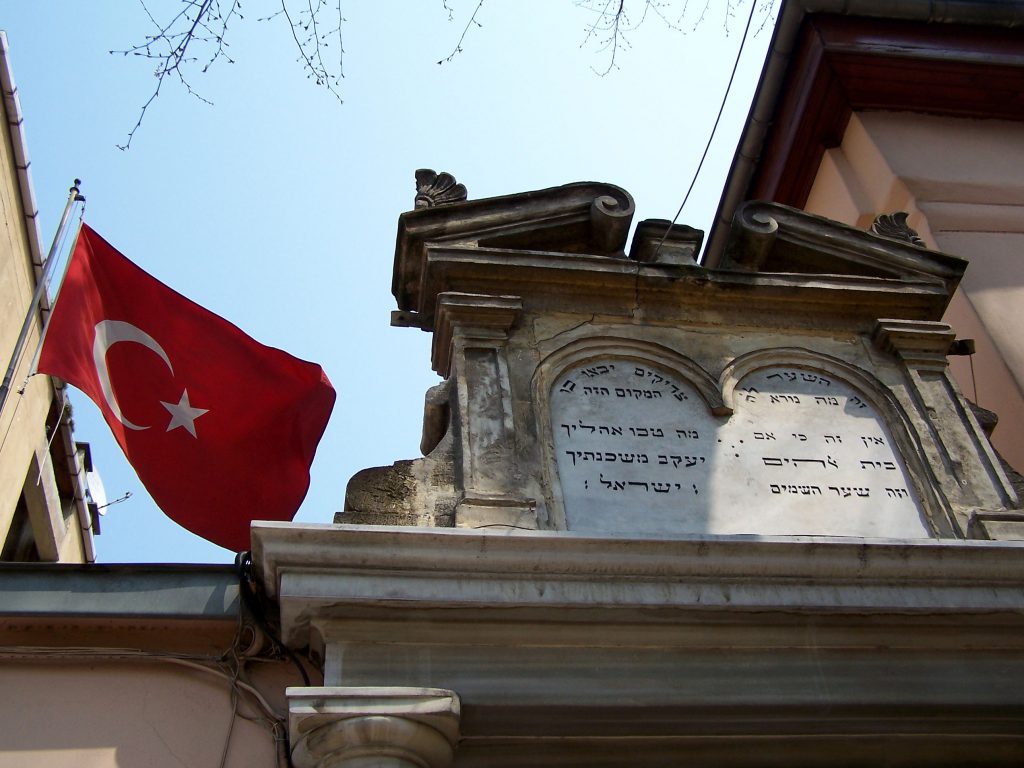Today two large bridges cross the Bosporus, completely integrating the Anatolian part of the city with Istanbul proper. Formerly, crossing was by ferry only. Consequently, the Asian districts of Istanbul and its neighboring villages lived according to another rhythm, somewhat at the margins of the pulsing heart of the city. In Kuzgunçuk, a little to the north of Üsküdar, is a significant Jewish quarter nicknamed Little Jerusalem. Today it is home to two beautiful synagogues. The lovely Hemdat Israel Synagogue is also located on the Asian side, near the Haydarpasa train station. The big city looms nearby, but Kuzgunçuk has managed to preserve the atmosphere of a village, a tranquil oasis with views of the Bosporus to the west. Icadiye Street is the heart of the quarter, inhabited by Greeks, Armenians, and, above all, by Jews for more than 400 years. Today, not much more than a few Hebrew inscriptions on stone or wood facades remain to recall the Jewish past.

The elegant Beth Yaakov Synagogue was built in 1878 to take the place of an earlier synagogue on the same site. Restored at the end of the nineteenth, the synagogue opens onto a beautiful garden. Notice the original landscapes on the ceiling.
A Greek church and an Armenian church stand nearby. Higher up the hillside, the Beth Nissim Synagogue serves as a place of worship during the winter months. Constructed in 1840, it is noteworthy for its richly painted hall. The aron dates from the end of the eighteenth century.
A slight distance from the center of Kuzgunçuk, the Nakas Tepe Jewish cemetery is a worthwhile destination during your visit. Many Jews had themselves buried here, even if they lived in the city, because the Asian soil was considered closer to the Holy Land. One can see a few beautiful gravestones from the sixteenth and seventeenth centuries. As with other Jewish cemeteries in the city, it has been thoroughly pillaged in the last decades. Its stones have served as construction material for the shanties built by the immigrants from Anatolia.
Descending along the banks of the Bosporus toward the south and after passing Üsküdar, you will arrive at Haydarpasa, a superb train station. Dating from the beginning of the twentieth century, it was the terminus of trains linking the capital to its Ottoman possessions of the Middle East, Jerusalem, Mecca, and Medina. Many Jews arriving in Kuzgunçuk settled in this quarter, whose development was in full swing at the time and where the beautiful new Hemdat Israel Synagogue had just opened in 1899 with the attendance of a number of Ottoman and western dignitaries. The building is surrounded by a garden that, although not apparent from the outside, contains a large rectangular prayer hall with a painted ceiling and beautiful wall decorations. The aron is installed in the middle of one of the broad walls across from the tevah, an arrangement typical of certain Italian synagogues. Not far from here, one can visit a small, well-preserved Jewish cemetery.